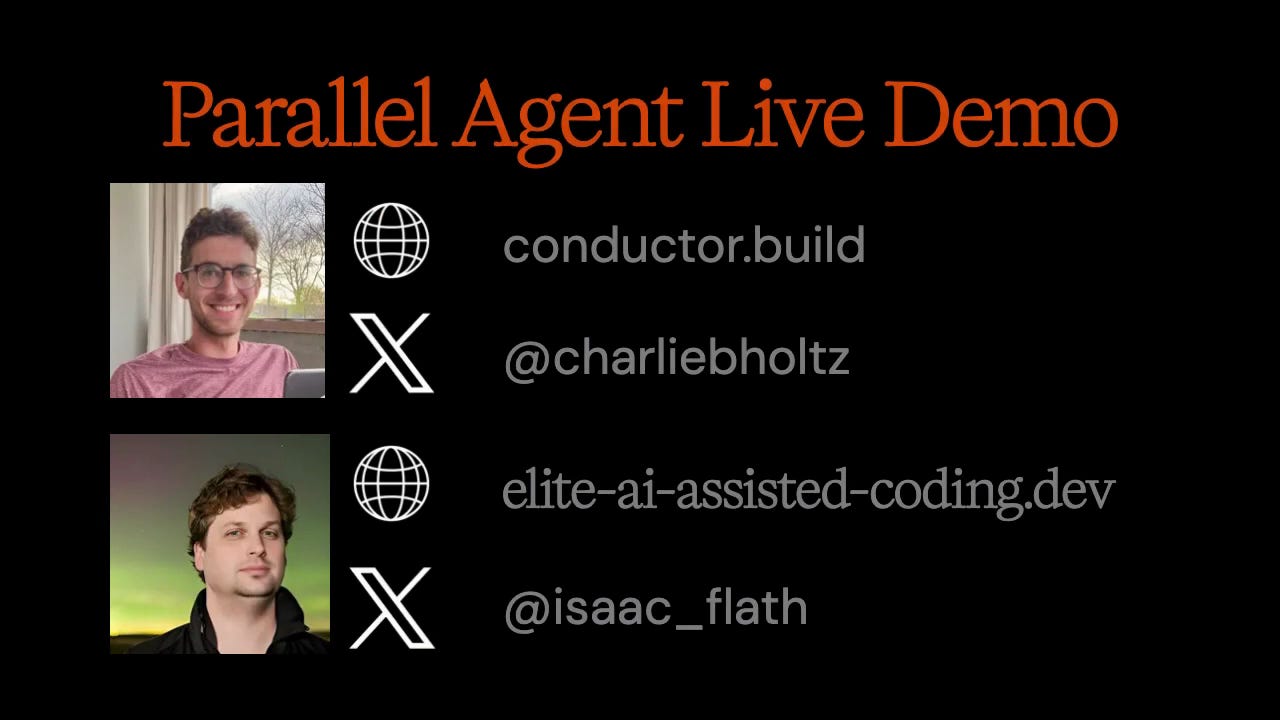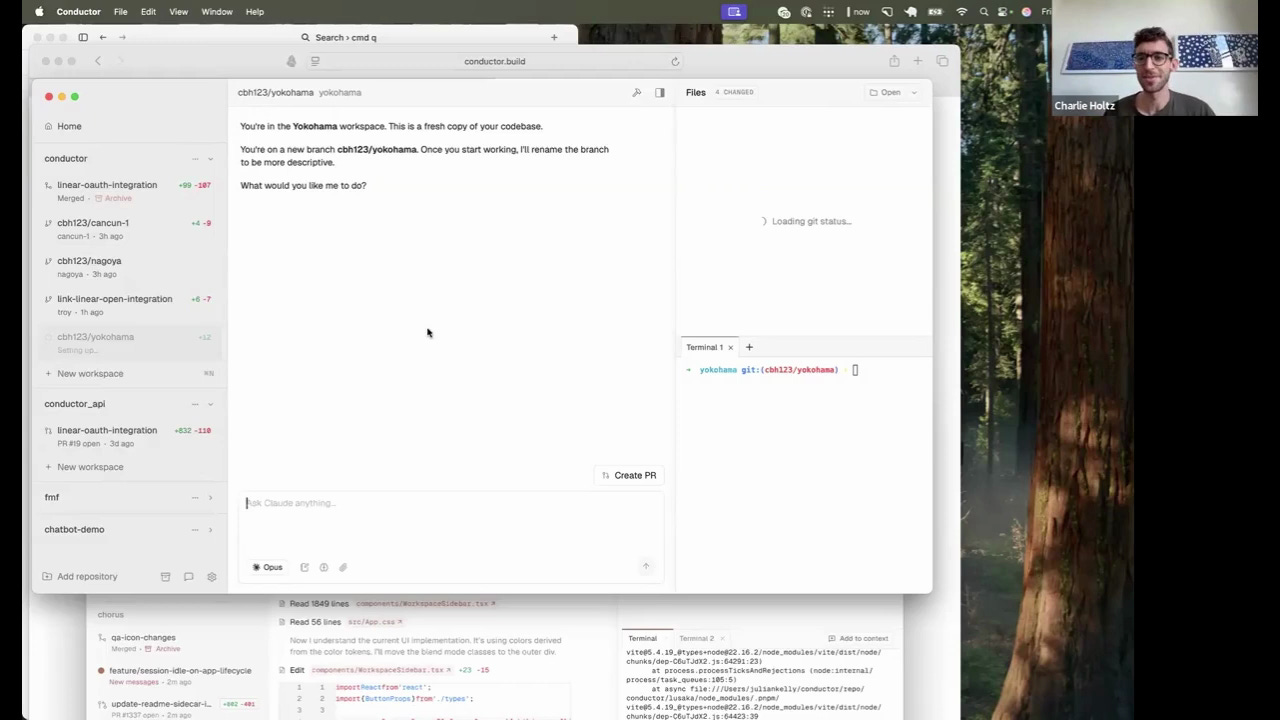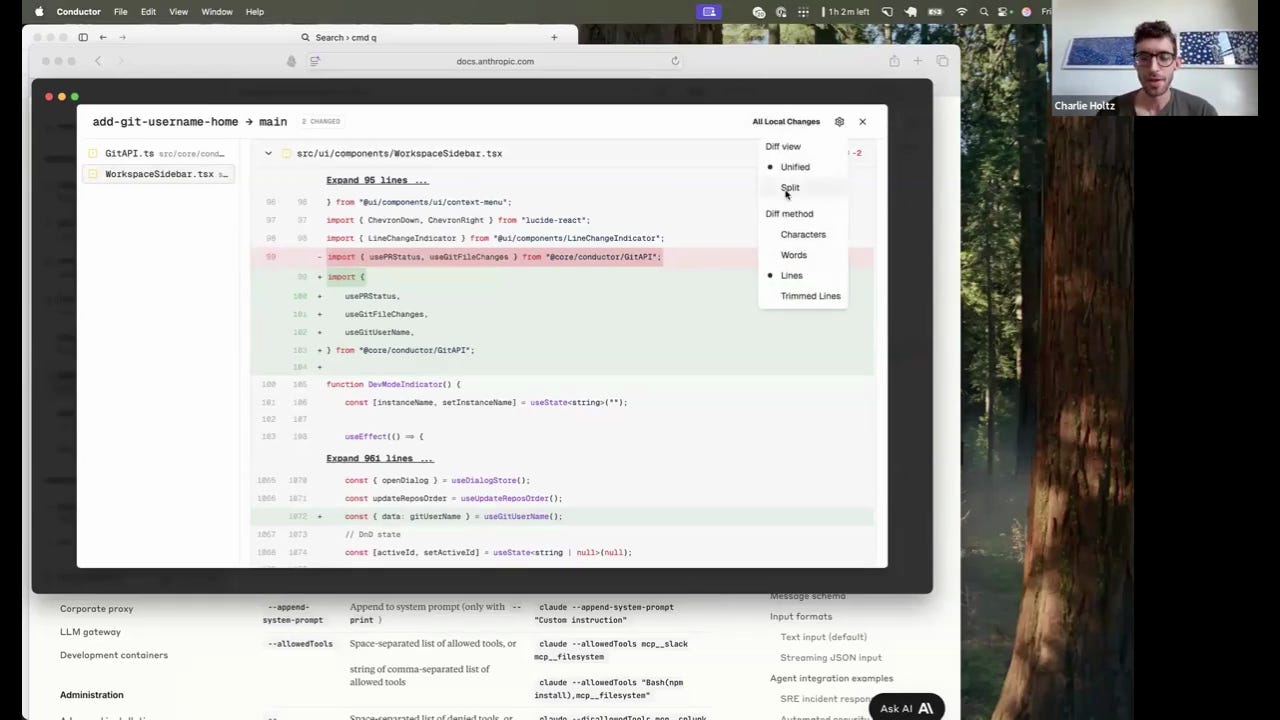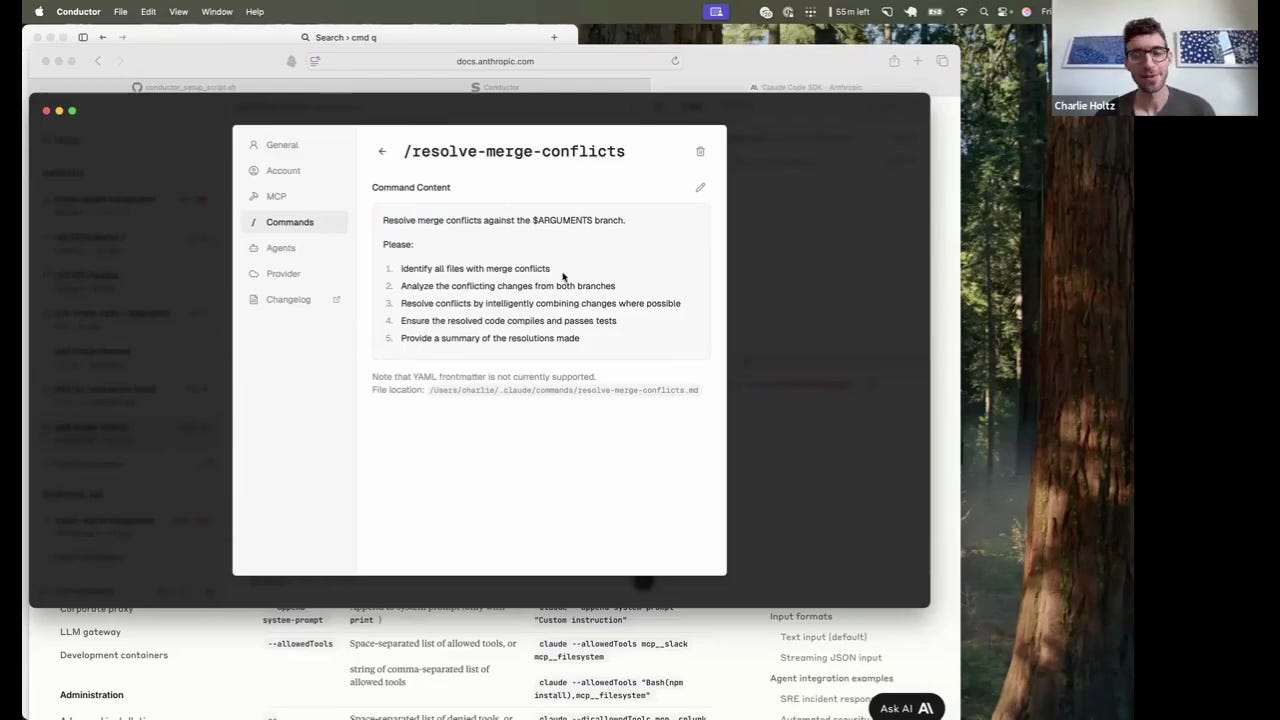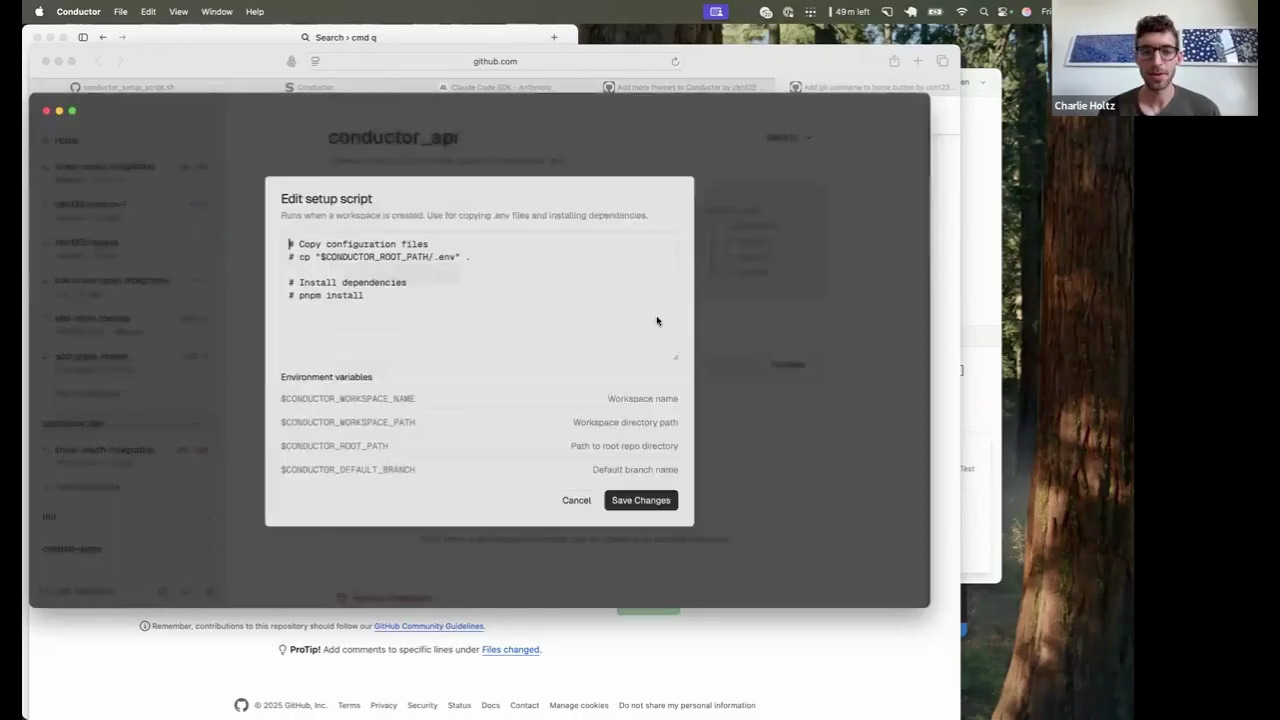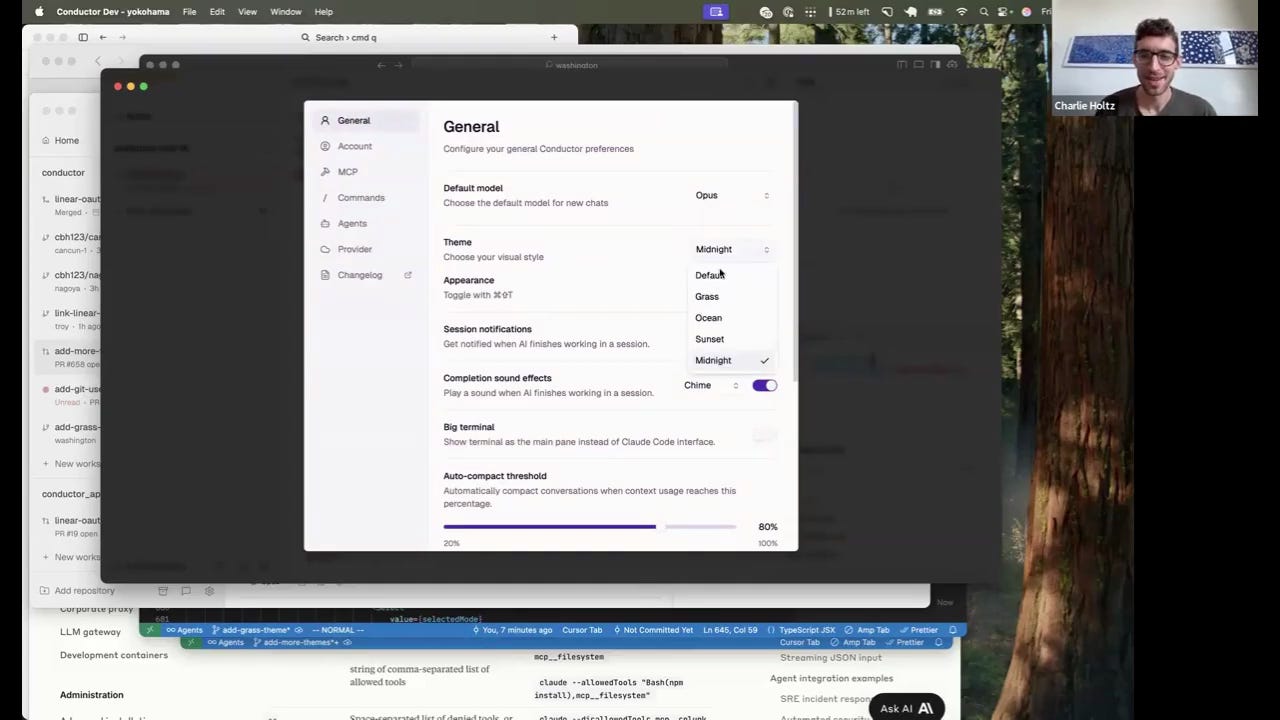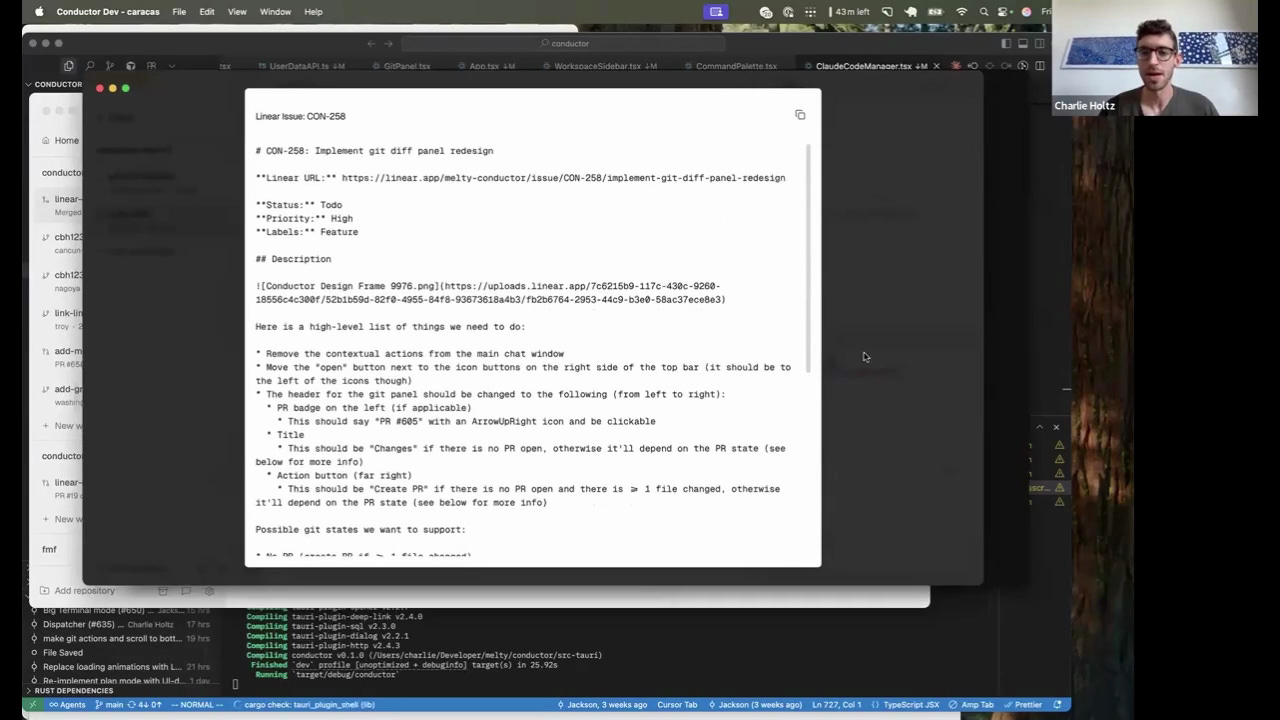The Parallel Agent Multiplier with Git Worktrees and Conductor
Learn how Conductor enables developers to run multiple agents in parallel, manage workspaces efficiently, and do the full AI-assisted development workflow with real-world examples and live coding
Conductor is a tool designed to revolutionize how developers manage AI-assisted coding workflows. Based on a conversation with Charlie 00:10, the creator of Conductor, we'll show real workflows, real features being built, and dive into its core features, benefits, and future roadmap.
Introduction to Conductor
"Conductor is an app built on top of Claude Code that lets you run a bunch of Claude Codes all in parallel, oversee their work as they're working and then review their work and merge it into your code base" 02:16
Conductor is a new approach in AI-assisted coding. Instead of being first and foremost a human coding environment that adds AI on top (chat/agent sidebars), or standalone agent-first CLI agents (like Claude Code), Conductor brings a workflow to Claude Code that allows for true agent-first, but still human-in-the-loop, workflows.
Conductor makes working with multiple AI agents in parallel ergonomic and practical. With Conductor, you can oversee the work of these agents, review their code, and seamlessly merge it into your production codebase. 03:13
Key benefits of Conductor include:
Parallel AI Agents: Run multiple Claude Code instances simultaneously.
Centralized Oversight: Monitor and manage the progress of each agent.
GitHub Integration: Streamline code review, editing, testing, and merging processes.
Understanding Workspaces
"The coolest part of conductor is while Claude is working instead of me just watching Claude do its thing… I can create a new workspace" 06:17
Workspaces are the heart of how Conductor's parallel agents work. Each workspace is a separate Git worktree 06:45, providing an isolated environment for each AI agent to work without interfering with others.
This isolation is crucial for preventing conflicts and ensuring that each agent can focus on its assigned task without being affected by changes made by other agents. Each workspace gets a unique city name 13:01, making it easy to identify and manage.
The Development Workflow
Conductor supports the entire development workflow, from task creation to code merging. Here's a step-by-step guide to using Conductor in your development process:
Create a New Workspace: Start by creating a new workspace for each task. This ensures isolation and prevents conflicts 03:42.
Assign Tasks to AI Agents: Use natural language to describe the task you want the AI agent to perform 04:09. You can even tag specific files for context 04:15.
Monitor Progress: Oversee the progress of each agent in real-time, with live updates on the files being modified 10:31.
Test Changes: Before merging any code, thoroughly test the changes in the isolated workspace using the integrated terminal 12:28.
Create a Pull Request: Once you're satisfied with the changes, create a pull request to merge the code into your main branch 17:30.
Resolve Conflicts (if any): Use the /resolve merge conflicts slash command to handle any merge conflicts that may arise 17:59.
Merge and Archive: After merging the code, archive the workspace to clean up your environment 22:44.
Setup and Configuration
Setting up Conductor for your projects is straightforward. The first step is to download the app from conductor.build 02:46.
"Everyone should go to conductor.build and click this download button. And that's going to be step number one." 02:46
Once you have the app installed, you'll need to add your repositories to Conductor. This is done by clicking the "Add Repository" button in the bottom left corner 23:34.
The most important aspect of the setup is the setup script 23:53. This script runs every time you create a new workspace and ensures that your environment is properly configured.
"Each new workspace only copies the files tracked and get" 24:36
Here's an example of a default setup script:
#!/bin/bash
# Copy over .env file from parent directory
cp ../.env .env
# Install dependencies
PMPM installLive Demo
All of this was shown on live tasks, and we got to see the new themes that were added by Conductor live, as well as a UI change.
Advanced Features and Future Development
Conductor is constantly evolving, with new features and improvements being added regularly. Some of the upcoming features include:
Linear Integration: Connect Conductor with Linear to link workspaces to specific issues 29:19.
Multi-Repo Support: Work across multiple repositories simultaneously 29:03.
Cross-Platform Development: Plans to support Windows and Linux in the future 26:43.
Model Integration Roadmap: Explore integrating new agent models in addition to Claude Code 27:10.
Windows Support: Ability to use Conductor on Windows/Linux
The Linear integration will bring better workflow and collaboration for teams by linking Conductor workspaces directly to Linear issues 30:27.
Q & A
Here are some questions and answers from the presentation that weren't part of the main flow:
Q: Is this using the Claude Code CLI app in the background? 07:04 A: It's actually using the Claude Code SDK 07:09, which is a wrapper on the CLI, so the output is exactly like what you get from the CLI, but it's an SDK so we can run the commands in TypeScript.
Q: You're able to go to really specific files and tag. I guess that indicates that there's a little bit more that you normally do than just like vibe coding and not having any idea what the code is doing. How do you balance that? 08:36 A: If I know exactly what file to change, then I'll try to give as detailed a context as possible 09:00. If I don't really know, then I'll just let Claude find what files it wants to change 09:10. Like I think in general like the more specific you are, the better outputs you're going to get 09:14.
Q: So these changes are isolated, but they're happening on the same code base. I could imagine that they add more themes and the grass theme could edit similar files. How does that merging process work? 17:43 A: So my trick for that is slash resolve merge conflicts 17:59. And so it is inevitable that sometimes you do have merge conflicts 18:28. And I find that Claude is like really good at resolving them 18:32 because yeah, you're exactly right.
Q: Is this only for GitHub Repos, or does it work with GitLab? 25:38 A: If you click clone from URL, it _should_ work with any Git URL 25:41.
Q: Is there an ETA for Windows WSL support? 26:16 A: Hopefully soon-ish, but not sure. I don't want to be on the record for that 26:43.
Q: Claude Code is really good at coding, but is there a plan to add other models to Conductor as well? 27:07 A: Yes, there are 27:18. The reason we don't have other models yet is because Claude Code is still the best 27:23.
Q: Tell us more about the elixir conductor API app you're building web frontend. 27:53 A: The web app is actually very, very bare bones 28:06. It doesn't do much. It lets you manage your GitHub integration, and it uses a deep link to launch Conductor 28:12.
Q: Are there any plans on the roadmap to work across multiple repos, like implementing a feature across a backend and an iOS repo? 29:01 A: Definitely 29:09. I personally really want this because, as you can see, we have two repos that link together, conductor and conductor API 29:12


